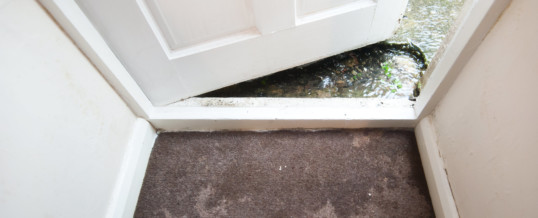
Heading down to your basement only to discover that items are damp or that there’s water on the ground is devastating. Water damage is one of the scariest types of issues to deal with. Not only will you need to deal with the immediate effects of the water, but you’ll soon need to deal with the aftereffects as well.
This is why it’s essential to correct water in basement spaces as soon as possible. Once you are able to correct the issue, you then need to prevent the seepage from happening again. Taking these steps is crucial for keeping you and your family safe.
When the water has made its way into your home’s basement, it’s time to act fast. Continue reading below for several ways to deal with water in the basement and the steps to take to correct it!
1. Safety Above All
Upon discovering water in the basement, your mind might go into full panic mode. You might instantly begin looking for a source of water and start saving furniture if the water damage is significant. Before you get to those steps, however, take a step back and try to remain calm.
Safety should always be a priority when dealing with water issues in the house. Even if the water damage doesn’t seem substantial, you still need to proceed with caution. Wear rubber boots when entering the water and never touch electrical devices even if they seem dry.
2. Locate the Source
Once you have safety in mind, you can then begin to search for the source of water. Locating the source of the problem is a good starting place because if the water is still entering the basement, it won’t do much good trying to get the current water out. Is this a reoccurring issue or a first-time event?
If there’s a leak in a plumbing pipe, then you know to address the issue by shutting off the water supply. If the problem is due to water seepage, then you’ll need to determine why the seepage is happening and how to correct the problem. Once you find the problem, stop the water from entering the basement and move forward with the next step.
3. Remove All Damp Items
If you’ve stopped the water from entering, you can now begin to remove all damp items. Remember not to touch any items that are plugged into the wall. You can, however, remove furniture items, decorative pieces, and so on.
Anything that’s wet and not electrical you can pick up and remove from the basement. Place these items in a place to dry. Set them outside if needed.
Keeping them in the basement will increase the chances of mold and mildew growth.
4. Use a Dehumidifier
You can use a dehumidifier in the basement to help keep the moisture out of the air. In some situations, moisture in the basement is inevitable. Basements are below the ground and don’t get proper ventilation as the rest of the house does.
By using a humidifier on a regular basis, you can keep out this every-day moisture or keep it to a minimum. The dehumidifier will remove moisture from the air before it’s able to seep into furniture, the floors, and the walls.
5. Seal All Cracks
If there are cracks in the foundation walls, then they’ll need to be sealed. Do keep in mind that when sealing cracks, you need to use a water-stop compound. Regular caulking will not fix the problem.
To seal the cracks correctly, you should seal from the outside and then allow it to dry. Scribe a few lines in the bonding cement and then apply a second coat. This is one way to start the waterproofing process.
6. Install a Sump Pump
If the amount of water that entered your basement is substantial, you should consider installing a sump pump. A sump pump works well to remove standing water from your basement floor. The installation process requires a professional, and even after the water is removed, you’ll need to correct the flooring, plumbing, and electrical wires.
After the job is complete, your sump pump will remain in place. The next time water reaches a certain level in your basement, the sump pump will kick in and remove the water for you.
7. Focus on Gutters and Downspouts
In some cases, water seepage into the basement is due to issues involving the gutters and downspouts. Be sure to head outside and take a look at both. If your gutters are clogged, then water could be pouring down into the soil when it rains, causing seepage.
If downspouts aren’t long enough, they could place rainwater directly onto your basement walls, which also causes seepage. Take a look at the length of your downspout. Ensure it’s long enough to direct water a couple of feet away from your house.
Your landscaping is another factor to consider. There should be a slight slope in your landscaping that directs the water away from your home.
Don’t Let Water in Basement Spaces Get You Down, Invest in Basement Waterproofing Today!
Finding water in basement spaces is a hard blow to take. The process of removing the water and preventing it from happening again is an essential job that shouldn’t be taken lightly. Follow these steps above to guide you through the process, and be sure to contact the professionals.
Here at Armored Basement, we work with you to waterproof your basement and stop water from entering again. When hiring us, you’ll have peace of mind knowing that the problem was corrected professionally.
We value honesty and quality. Working with us ensures you only pay for what you need and you get professional quality work.
Click here to contact us today!
ShareAPR
